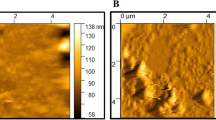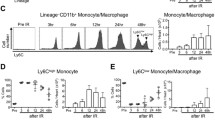Abstract
Although simvastatin (SIM) has been proven to be a powerful agent against myocardial ischemia/reperfusion (MI/R) injury, poor water solubility, short half-life, and low bioavailability have made it futile while using conventional drug delivery system. Hence, this study aims to investigate therapeutic efficacy of SIM-loaded nano-niosomes on MI/R injury. Surface active agent film hydration method was used to synthesize nano-niosomes. The physicochemical properties of nano-niosomes were characterized using dynamic light scattering (DLS) and transmission electron microscopy (TEM). Moreover, niosomes were characterized in entrapment efficiency (EE) and releasing pattern. Male Wistar rats were assigned into five groups (sham, MI/R, SIM, nano-niosomes, and SIM-loaded nano-niosomes). To induce MI/R, left thoracotomy was performed along mid-axillary line. The LAD ligation lasted for 45 min. A single dose (3 mg/kg) of drug formulations was injected into myocardial. Echocardiography was performed to evaluate cardiac function. The expression of the necroptosis markers was evaluated using western blot assay. Particle size of only nano-niosomes was about 137 nm, whereas a shift to 163 nm was observed in nano-niosomes containing SIM. Optimized niosomes were achieved by span 80, drug to cholesterol ratio of 0.4 with 7-min sonication time. EE of optimized nano-niosomes containing SIM was 98.21%. The effects of nano-niosomes containing on improving cardiac function and inhibiting necroptosis pathway was more efficient than the SIM group. Our findings have suggested that nano-niosomes can be applied as a notable drug delivery method to augment stability, bioavailability, and therapeutic efficacy of SIM, when it used against myocardial I/R injury.
Graphical abstract






Similar content being viewed by others
Availability of data and materials
All datasets generated are available on request.
References
Sidney S, et al. The “heart disease and stroke statistics—2013 update” and the need for a national cardiovascular surveillance system. 2013, Am Heart Assoc.
Poustchi F, et al. Combination therapy of killing diseases by injectable hydrogels: from concept to medical applications. Adv Healthc Mater. 2020: p. 2001571.
Hausenloy DJ, Yellon DM. Myocardial ischemia-reperfusion injury: a neglected therapeutic target. J Clin Investig. 2013;123(1):92–100.
Saporito F, et al. In situ gelling scaffolds loaded with platelet growth factors to improve cardiomyocyte survival after ischemia. ACS Biomater Sci Eng. 2018;5(1):329–38.
Heeringa J, et al. Prevalence, incidence and lifetime risk of atrial fibrillation: the Rotterdam study. Eur Heart J. 2006;27(8):949–53.
Dong M, et al. Rho-kinase inhibition: a novel therapeutic target for the treatment of cardiovascular diseases. Drug Discov Today. 2010;15(15–16):622–9.
Koshinuma S, et al. Combination of necroptosis and apoptosis inhibition enhances cardioprotection against myocardial ischemia–reperfusion injury. J Anesth. 2014;28(2):235–41.
Sharifi M, et al. Necroptosis and RhoA/ROCK pathways: molecular targets of Nesfatin-1 in cardioprotection against myocardial ischemia/reperfusion injury in a rat model. 2021. 48(3): p. 2507–2518.
Linkermann A, et al. Rip1 (receptor-interacting protein kinase 1) mediates necroptosis and contributes to renal ischemia/reperfusion injury. Kidney Int. 2012;81(8):751–61.
Cai Z, et al. Plasma membrane translocation of trimerized MLKL protein is required for TNF-induced necroptosis. Nat Cell Biol. 2014;16(1):55–65.
Duan JS, et al. Urotensin-# receptor antagonist SB-706375 protected isolated rat heart from ischaemia–reperfusion injury by attenuating myocardial necrosis via RhoA/ROCK/RIP3 signalling pathway. Inflammopharmacology. 2019;27(6):1309–18.
Liu J, Shen Q, Wu Y. Simvastatin prevents cardiac hypertrophy in vitro and in vivo via JAK/STAT pathway. Life Sci. 2008;82(19–20):991–6.
Jones SP, Trocha SD, Lefer DJ. Pretreatment with simvastatin attenuates myocardial dysfunction after ischemia and chronic reperfusion. Arterioscler Thromb Vasc Biol. 2001;21(12):2059–64.
Tiwari R, Pathak K. Nanostructured lipid carrier versus solid lipid nanoparticles of simvastatin: comparative analysis of characteristics, pharmacokinetics and tissue uptake. Int J Pharm. 2011;415(1–2):232–43.
De Angelis G. The influence of statin characteristics on their safety and tolerability. Int J Clin Pract. 2004;58(10):945–55.
Rizvi SZH, et al. Simvastatin-loaded solid lipid nanoparticles for enhanced anti-hyperlipidemic activity in hyperlipidemia animal model. Int J Pharm. 2019;560:136–43.
Firozian F, et al. Improvement of therapeutic potential N-acetylcysteine in acetaminophen hepatotoxicity by encapsulation in PEGylated nano-niosomes. Life Sci. 2020. 255: p. 117832.
Akbarzadeh I, et al. Preparation, optimization and in-vitro evaluation of curcumin-loaded niosome@ calcium alginate nanocarrier as a new approach for breast cancer treatment. Biology. 2021;10(3):173.
Sharifi M, et al. Necroptosis and RhoA/ROCK pathways: molecular targets of Nesfatin-1 in cardioprotection against myocardial ischemia/reperfusion injury in a rat model. Mol Biol Rep. 2021;48(3):2507–18.
Amani H, et al. Would colloidal gold nanocarriers present an effective diagnosis or treatment for ischemic stroke? Int J Nanomed. 2019;14:8013.
Huang J, et al. pH-sensitive nanocarrier-mediated codelivery of simvastatin and noggin siRNA for synergistic enhancement of osteogenesis. ACS Appl Mater Interfaces. 2018;10(34):28471–82.
Luo KQ, Long HB, Xu BC. Reduced apoptosis after acute myocardial infarction by simvastatin. Cell Biochem Biophys. 2015;71(2):735–40.
Soares DG, et al. Biological analysis of simvastatin-releasing chitosan scaffold as a cell-free system for pulp-dentin regeneration. J Endod. 2018. 44(6): p. 971–976. e1.
Amani H, et al. Controlling cell behavior through the design of biomaterial surfaces: a focus on surface modification techniques. Adv Mater Interfaces. 2019;6(13):1900572.
Amani H, et al. Microneedles for painless transdermal immunotherapeutic applications. J Control Release. 2021;330:185–217.
Xu YQ, et al. Niosome encapsulation of curcumin: characterization and cytotoxic effect on ovarian cancer cells. J Nanomater. 2016. 2016.
Muzzalupo R, Tavano L. Niosomal drug delivery for transdermal targeting: recent advances. Research and reports in transdermal drug delivery. 2015;4:23–33.
Akbarzadeh I, et al. Optimization, physicochemical characterization, and antimicrobial activity of a novel simvastatin nano-niosomal gel against E. coli and S. aureus. Chem Phys Lipids. 2021. 234: p. 105019.
Moghassemi S, Hadjizadeh A. Nano-niosomes as nanoscale drug delivery systems: an illustrated review. J Control Release. 2014;185:22–36.
Zhang J, et al. Simvastatin regulates myocardial cytokine expression and improves ventricular remodeling in rats after acute myocardial infarction. Cardiovasc Drugs Ther. 2005;19(1):13–21.
Zhe-Wei S, Li-Sha G, Yue-Chun L. The role of necroptosis in cardiovascular disease. Front Pharmacol. 2018;9:721.
Li C, et al. Metformin mediates cardioprotection against aging‐induced ischemic necroptosis. Aging cell. 2020. 19(2): p. e13096.
Tuuminen R, et al. Simvastatin pretreatment reduces caspase-9 and RIPK1 protein activity in rat cardiac allograft ischemia-reperfusion. Transpl Immunol. 2016;37:40–5.
Gong LL, et al. Coptisine exert cardioprotective effect through anti-oxidative and inhibition of RhoA/Rho kinase pathway on isoproterenol-induced myocardial infarction in rats. Atherosclerosis. 2012;222(1):50–8.
Hattori T, et al. Long-term inhibition of Rho-kinase suppresses left ventricular remodeling after myocardial infarction in mice. Circulation. 2004;109(18):2234–9.
Acknowledgements
Present work was funded by a research grant from Physiology Research Center in Iran University of Medical Science.
Funding
Present work was funded by a research grant from Physiology Research Center in Iran University of Medical Science.
Author information
Authors and Affiliations
Contributions
I.A. produced and characterized simvastatin-loaded nano-niosomes. Experiments were performed and analyzed by M.N., N.M., and M.SH. Study design, data interpretation, and writing of the manuscript were done by N.A. and M.N. All authors read and approved the final manuscript.
Corresponding author
Ethics declarations
Ethics approval and consent to participate
All the experiments were performed in accordance the ethical standards of the institutional and/or national research committee (ethical number: IR.IUMS.REC.1398.625) and with the 1964 Helsinki declaration and its later amendments or comparable ethical standards.
Competing interests
The authors declare no competing interests.
Additional information
Publisher's Note
Springer Nature remains neutral with regard to jurisdictional claims in published maps and institutional affiliations.
Rights and permissions
About this article
Cite this article
Naseroleslami, M., Niri, N.M., Akbarzade, I. et al. Simvastatin-loaded nano-niosomes confer cardioprotection against myocardial ischemia/reperfusion injury. Drug Deliv. and Transl. Res. 12, 1423–1432 (2022). https://doi.org/10.1007/s13346-021-01019-z
Accepted:
Published:
Issue Date:
DOI: https://doi.org/10.1007/s13346-021-01019-z




